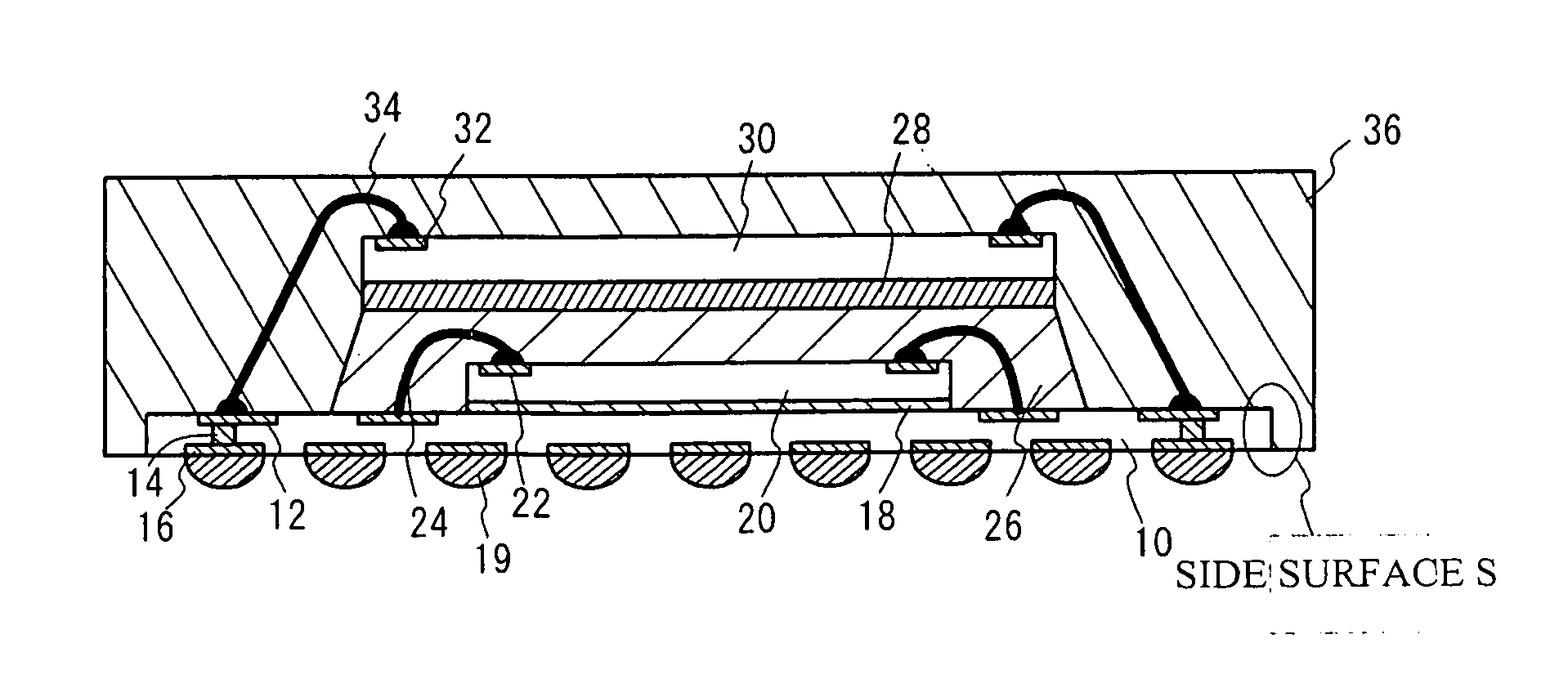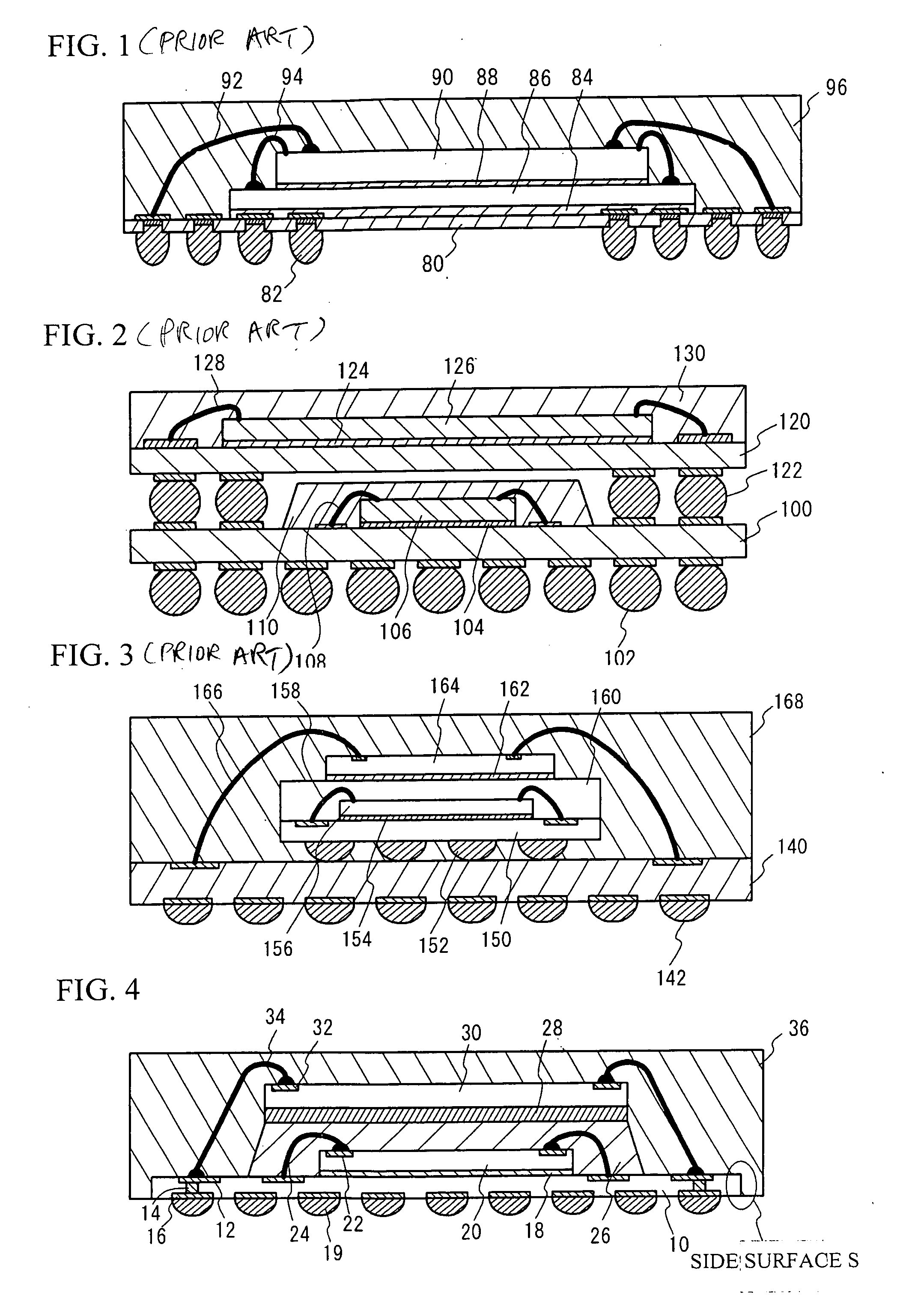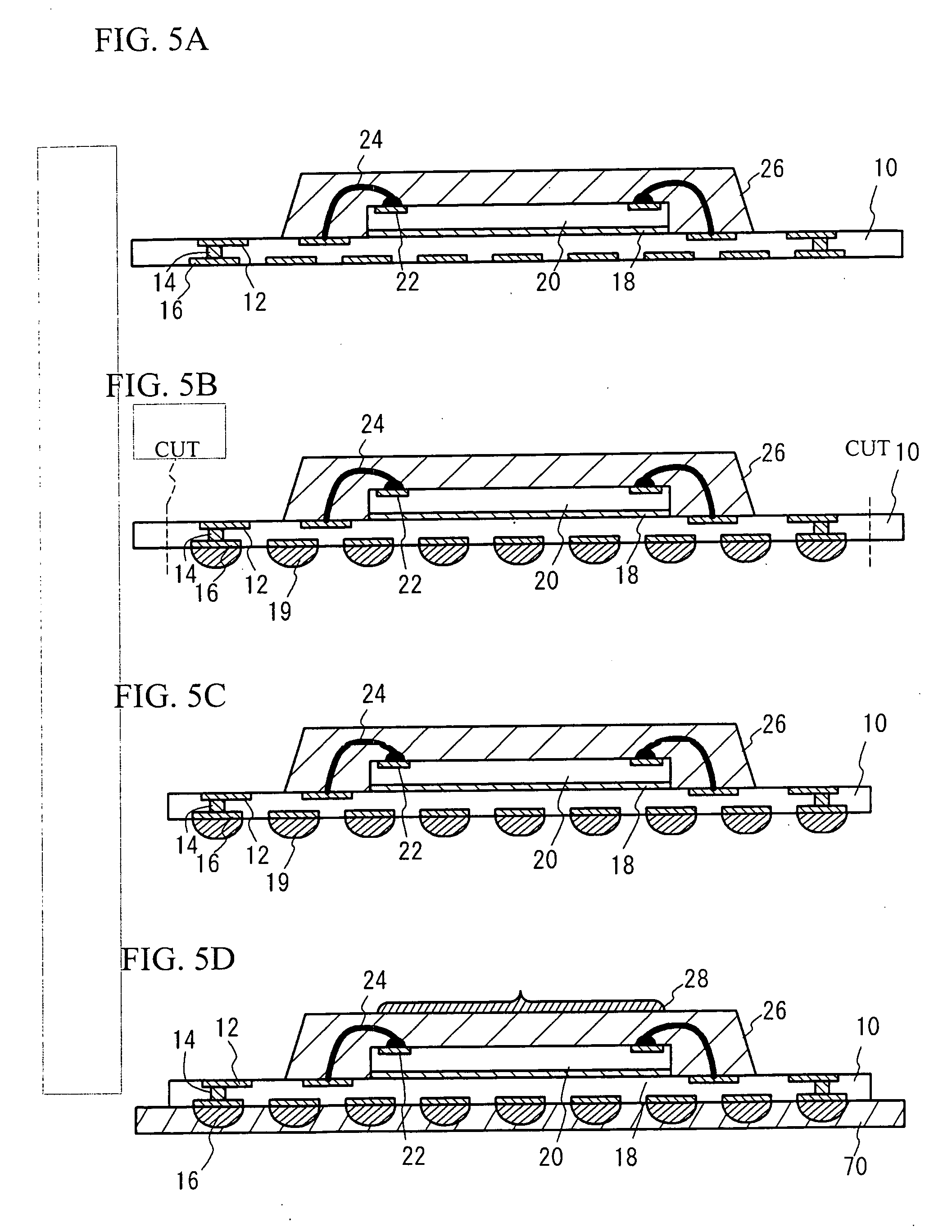Semiconductor device and fabrication method therefor
a semiconductor device and semiconductor technology, applied in the field of stacking semiconductor devices, can solve the problems of increasing costs, increasing costs, and disadvantages of downsizing, and achieve the effects of reducing the height of the semiconductor device, reducing the size and the cost, and excellent quality
- Summary
- Abstract
- Description
- Claims
- Application Information
AI Technical Summary
Benefits of technology
Problems solved by technology
Method used
Image
Examples
first embodiment
[0035]FIG. 4 is a cross-sectional view of a semiconductor device in accordance with a first embodiment of the present invention. There is disposed a first semiconductor chip 20, which is firmly attached on a relay substrate 10 (substrate) by using a die attach material 18. Pad electrodes 22 of the first semiconductor chip 20 are electrically coupled to pad electrodes 12 of the relay substrate 10 by wires 24. The first semiconductor chip 20 is sealed with a first sealing resin 26. There is disposed a semiconductor chip 30 (built-in semiconductor device), which is attached on the first sealing resin 26 by using an adhesive 28. Pad electrodes 32 of the second semiconductor chip 30 are electrically coupled to the pad electrodes 12 of the relay substrate 10 by wires 34. The first sealing resin 26 and the second semiconductor chip 30 are sealed with a second sealing resin 36. In addition, side surfaces S of the relay substrate 10 are covered with the second sealing resin 36. The relay sub...
second embodiment
[0044]FIG. 7 is a cross-sectional view of a semiconductor device in accordance with a second embodiment of the present invention. The same components and configurations as those employed in the first embodiment have the same reference numerals and a detailed explanation will be omitted. In the second embodiment, the pad electrodes 32 of the second semiconductor chip 30 are wire bonded to the pad electrodes 12 of the relay substrate 10 from the pad electrodes 12 to the pad electrodes 32 (reverse bonding). So, wires 34a can be lower than those employed in the first embodiment. Accordingly, the second sealing resin 36 can be lower and the semiconductor device can be downsized.
third embodiment
[0045]FIG. 8 is a cross-sectional view of a semiconductor device in accordance with a third embodiment of the present invention. In the third embodiment, a semiconductor device 50 having a second semiconductor chip 45 built therein is mounted, instead that the second semiconductor chip 30 employed in the first embodiment is directly provided. Other configurations are same as those employed in the first embodiment, and the same components and configurations as those employed in the first embodiment have the same reference numerals and a detailed explanation will be omitted. Referring to FIG. 8, in the built-in semiconductor device 50, the second semiconductor chip 45 is firmly attached onto (below, in the drawing) the relay substrate 40 by using a die attach material 48. The second semiconductor chip 45 and pad electrodes 42 of the relay substrate 40 are connected by wires 44. The second semiconductor chip 45 is sealed with a third sealing resin 46. The built-in semiconductor device ...
PUM
 Login to View More
Login to View More Abstract
Description
Claims
Application Information
 Login to View More
Login to View More - R&D
- Intellectual Property
- Life Sciences
- Materials
- Tech Scout
- Unparalleled Data Quality
- Higher Quality Content
- 60% Fewer Hallucinations
Browse by: Latest US Patents, China's latest patents, Technical Efficacy Thesaurus, Application Domain, Technology Topic, Popular Technical Reports.
© 2025 PatSnap. All rights reserved.Legal|Privacy policy|Modern Slavery Act Transparency Statement|Sitemap|About US| Contact US: help@patsnap.com



